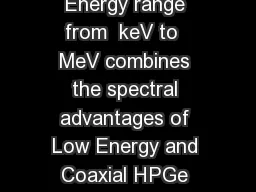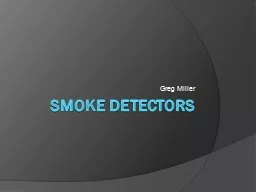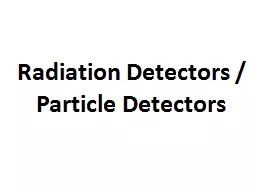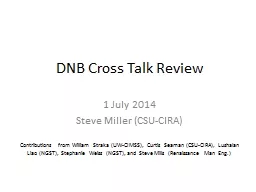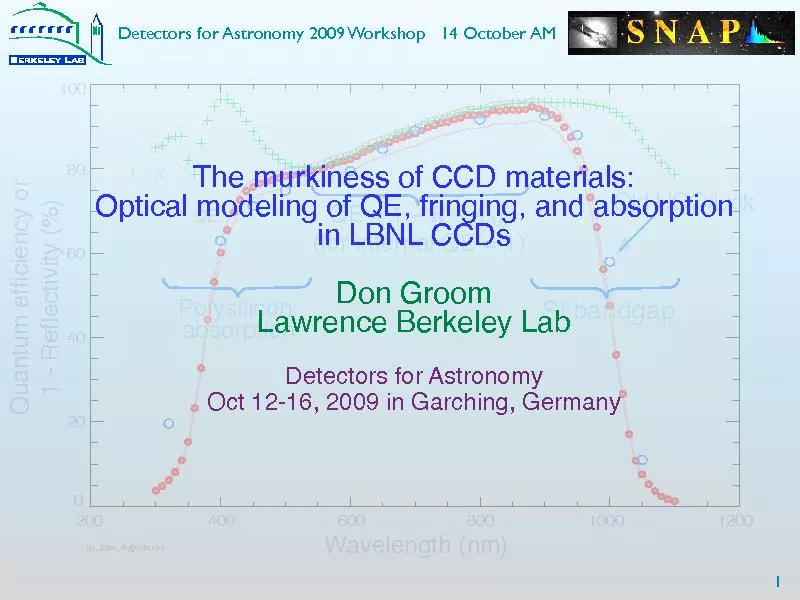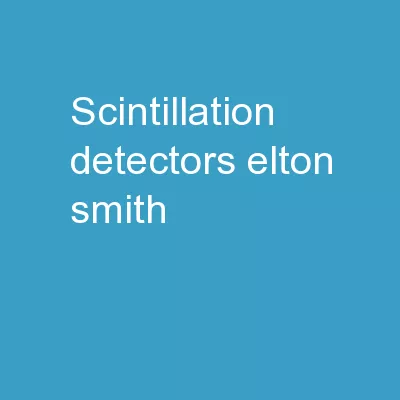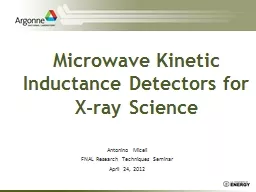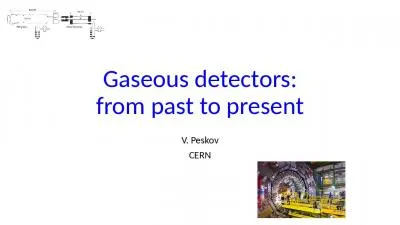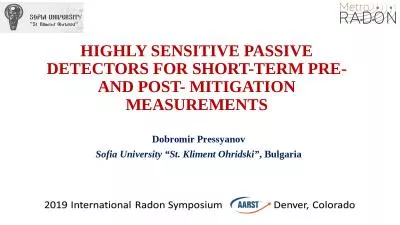PPT-The Si Detectors in the
Author : min-jolicoeur | Published Date : 2017-09-08
CMS Tracker commissioning operation future perspectives Michael Hoch 2 June 2010 CMS Si Detector Commissioning to Operation Radiation Damage Upgrade LHC planning
Presentation Embed Code
Download Presentation
Download Presentation The PPT/PDF document "The Si Detectors in the" is the property of its rightful owner. Permission is granted to download and print the materials on this website for personal, non-commercial use only, and to display it on your personal computer provided you do not modify the materials and that you retain all copyright notices contained in the materials. By downloading content from our website, you accept the terms of this agreement.
The Si Detectors in the: Transcript
CMS Tracker commissioning operation future perspectives Michael Hoch 2 June 2010 CMS Si Detector Commissioning to Operation Radiation Damage Upgrade LHC planning Outline Working principle of a Si detector. com Abstract Cascade detectors have been shown to operate extremely rapidly with high ac curacy and have important applications such as face detection Driven by this success cascade learning has been an area of active research in recent years Nev ert The resolution at low energies is equivalent to that of our Low Energy Ge LEGe Detector and the resolution at high energy is comparable to that of good quality coaxial SEGe detectors Most importantly the BEGe has a short fat shape which greatly enha Preshower. for the CMS: BARC Participation . Anita . Topkar. BARC. CMS Preshower Detector. End caps of . CMS detector has ~4300 . silicon . strip detectors covering . area . of~17 . m. 2 . . BARC . Greg Miller. Three Basic Types. Optical. Ionization. Air-Sampling. Optical and Optical Beam. Optical. Source (Incandescent or LED). Lens. Optical sensor (photodiode). Optical Beam. Light Intensity. Large Open Room. Particle Detectors. … is a device used to . detect, . track, and/or . identify high-energy particles [e.g., those produced by nuclear decay, cosmic radiation, or reactions in a particle accelerator]. . 1 July . 2014. Steve Miller (CSU-CIRA). Contributions from . William . Straka (UW-CIMSS), Curtis Seaman (CSU-CIRA), Lushalan Liao (NGST), Stephanie Weiss (NGST), and Steve Mills (Renaissance Man Eng.). Detectors for Astronomy 2009 W Detectors for Astronomy 2009 W Detectors for Astronomy 2009 W Detectors for Astronomy 2009 Workshop 14 October AM5Maximilian Fabricius Time reduction is the predominant reason for introducing new configurations.. Scan time has been reduced in newer configurations by the reduction or simplification of mechanical motion . For example the stop –start motion in the first two generations has been replaced by continuous rotation.. AGH University of Science and Technology. . Faculty of Physics and Applied Computer Science, . Kraków. , Poland. Jagiellonian. . Symposium. 2015 7-12/06/2015. Overview. David Christian. Fermilab. June 9, 2011. Outline. History: Why semiconductor detectors?. (Concentrating on silicon). Energy Resolution. Position Resolution (leverage of IC technology). Transition to the present. -- . Jlab. Summer . Lecture Series. Introduction. Components. . Scintillator. Light Guides. Light Sensors . Photomultiplier Tubes. Silicon Photomultipliers. Formalism. /Electronics. Application to Particle Identification. Antonino . Miceli. . FNAL . Research Techniques Seminar. April 24, 2012. Outline. Why Superconducting Detectors?. Detector Requirements. Applications. Overview of MKIDs. MKID activities at Argonne. MKID resonator readout . V. . Peskov. CERN. Topics to be covered:. History of detectors of photons and charged particles. Main designs of gaseous detectors. Characteristics and physics of operation. Applications. Modern detectors of photons and charged particles can be classified into four main categories: vacuum, gaseous, liquid and solid–state.. Dobromir. . Pressyanov. Sofia University “St. . Kliment. . Ohridski. ”. , Bulgaria. The focused challenge: How to evaluate by short-term (e.g. one week) integrated measurements at normal living conditions the radon reduction achieved after the mitigation work is completed? .
Download Document
Here is the link to download the presentation.
"The Si Detectors in the"The content belongs to its owner. You may download and print it for personal use, without modification, and keep all copyright notices. By downloading, you agree to these terms.
Related Documents


